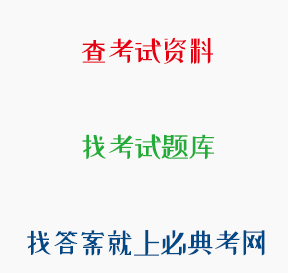正确答案: A
了解情况后耐心教育他
题目:学生小涛经常旷课,不遵守学校的管理制度,学校对小涛进行教育的恰当方式是( )。
解析:以人为本的学生观强调,学生独立意义的人,教师应该尊重学生人格,不应该简单粗暴的进行教育,不能将管教学生的责任推脱给家长,更不能置之不理,或开除学籍,而是耐心疏导,帮助学生改正错误。故选择A。
查看原题 查看所有试题
学习资料的答案和解析:
[单选题]关于班主任的配备与选聘,下列说法不正确的是( )。
专职班主任制度
解析:《中小学班主任工作规定》第五条:班主任由学校从班级任课教师中选聘。聘期由学校确定,担任一个班级的班主任时间一般应连续1学年以上。B选项,专职班主任制度说法错误,故选择B。
[单选题]《中华人民共和国教师法》规定:教师是履行教育教学职责的( ),承担教书育人,培养社会主义事业建设者和接班人、提高民族素质的使命。
专业人员
解析:《中华人民共和国教师法》第三条规定:"教师是履行教育教学职责的专业人员,承担教书育人,培养社会主义事业建设者和接班人,提高民族素质的使命。教师应当忠诚于人民的教育事业。"故选择B。
[单选题]《国家中长期教育改革和发展规划纲要(2010-2020)》提出,对中小学教师实行( )。
每五年一周期的全员培训
解析:《国家中长期教育改革和发展规划纲要(2010-2020年)》第五十三条规定完善教师培训制度,将教师培训经费列入政府预算,对教师实行每五年一周期的全员培训。故本题选D。
[单选题]在PowerPoint中,建一个演示文档的第一张幻灯片的默认版式是( )。
标题幻灯片
解析:在PowerPoint中新建一个演示文稿时第一张默认的是标题幻灯片。故选择C。
[单选题]个体身心发展的互补性要求教育应该做到( )。'
长善救失
解析:"长善",就是要发现被教育者的优点和长处,并精心给予培植,促其保持和发扬光大;"救失",就是要正确认识和对待被教育者的缺点与不足,并通过耐心的教育,督促其克服和改正。个体身心发展的互补性要求教师要长善救失,善于发现学生的错误,井加以纠正和指导,将缺点转化为优点。
[单选题]下列方法,不属于行为矫正治疗的是( )。
自由联想
解析:自由联想法是弗洛伊德精神分析学派的主要研究方法。
[多选题]班主任因担心安全问题而取消应该组织的班级活动是一种不负责任的表现。( )
解析:《小学班主任工作暂行规定》规定了班主任职责,其中指明,班主任应当关心学生身体健康,关心学生课余生活,指导学生参加劳动实践。班主任在活动计划、制定、实施阶段,应对任何可能发生的突发事件或情况做好准备。题干中班主任的行为是负责任的表现。
[单选题]Passage 1
In the field of psychology, there's long been a certain haziness surrounding the definition of creativity, an I-know-it-when-I-see it attitude that has eluded a precise formulation. During our conversation, Beeman told me that he used to be reluctant to tell people what his area of study was, for fear of being dismissed or misunderstood. What, for instance, crosses your mind when you think of creativity?Well, we know that someone is creative if he produces new things or has new ideas. A choreographer, an artist, a writer, a scientist, or a mathematician with a novel discovery -these are the creatives, the people who bring something new into the world. And yet, as John Kounios, a psychologist at Drexel University who collaborates frequently with Beeman, points out, that view is wrong, or at least not entirely right. "Creativity is the process, not the product:' he says.
To illustrate, Beeman offers an example. Imagine someone who has never used or seen a paperclip and is struggling to keep a bunch of papers together. Then the person comes up with a new way of bending a stiff wire to hold the papers in place. "That was very creative:' Beeman says. On the flip side, if someone works in a new field-Beeman gives the example of nanotechnology-anything that he produces may be considered inherently "creative." But was the act of producing it actually creative? As Beeman puts it, "Not all artists are creative. And some accountants are very creative."
Insight, however, has proved less difficult to define and to study. Because it arrives at a specific moment in time, you can isolate it,examine it, and analyze its characteristics."Insight is only one part of creativity:'Beeman says. "But we can measure it. We have a temporal marker that something just happened in the brain. l'd never say that's all of creativity, but it's a central, identifiable component." When scientists examine insight in the lab, they are looking at what types of attention and thought processes lead to that moment of synthesis. If you are trying to facilitate a breakthrough, are there methods you can use that help? If you feel stuck on a problem, are there tricks to get you through?
In a recent study, Beeman and Kounios followed people's gazes as they attempted to solve what's called the remote-associates test, in which the subject is given a series of words, like "pine:' "crab:' and "sauce:' and has to think of a single word that can logically be paired with all of them. They wanted to see if the direction of a person's eyes and her rate of blinking could shed light on her approach and on her likelihood of success. It turned out that if the subject looked directly at a word and focussed on it-that is, blinked less frequently, signalling a higher degree of close attention-she was more likely to be thinking in an analytical, convergent fashion, going through possibilities that made sense and systematically discarding those that didn't. If she looked at "pine:' say, she might be thinking of words like "tree:' "cone:' and "needle:' then testing each option to see if it fit with the other words. When the subject stopped looking at any specific word, either by moving her eyes or by blinking, she was more likely to think of broader, more abstract associations. That is a more insight-oriented approach. "You need to learn not just to stare but to look outside your focus:' Beeman says.(The solution to this remote-associates test."apple.")
As it turns out, by simply following someone's eyes and measuring her blinks and fixation times (how long she looks at something before either looking away or closing her eyes), Beeman's group can predict how someone will likely solve a problem and when she is nearing that solution. That's an important consideration for would-be creative minds. it helps us understand how distinct patterns of attention may contribute to certain kinds of insights.
Which of the following is closest in meaning to the underlined word "haziness" in PARAGRAPH ONE?
Vagueness
解析:根据第一段“In the field of psychology, there has long been a certain haziness surrounding the definition of creativity, an I-know-it-when-I-see-it attitude that has eluded a precise formulation.”可知,在心理学领域,“创造性”一直没有形成准确的定义。大家所持的态度就是“当我看到创造力的时候,我就知道什么是创造力”,以这种态度避开了对创造力定义的精确化。既然是避开了精确化,那么当然就是模糊不清的。即长期以来人们对于创造力的定义一直处于模糊或朦胧的状态。vagueness的意思是“含糊”,与haziness的意思最接近。综上,B选项正确。故选择B。

 川公网安备 51012202001360号
川公网安备 51012202001360号